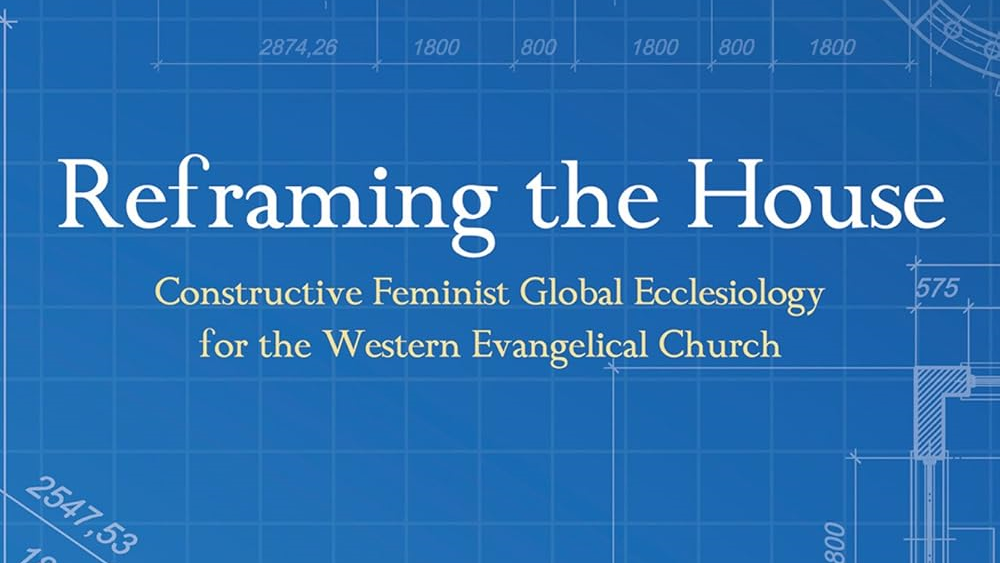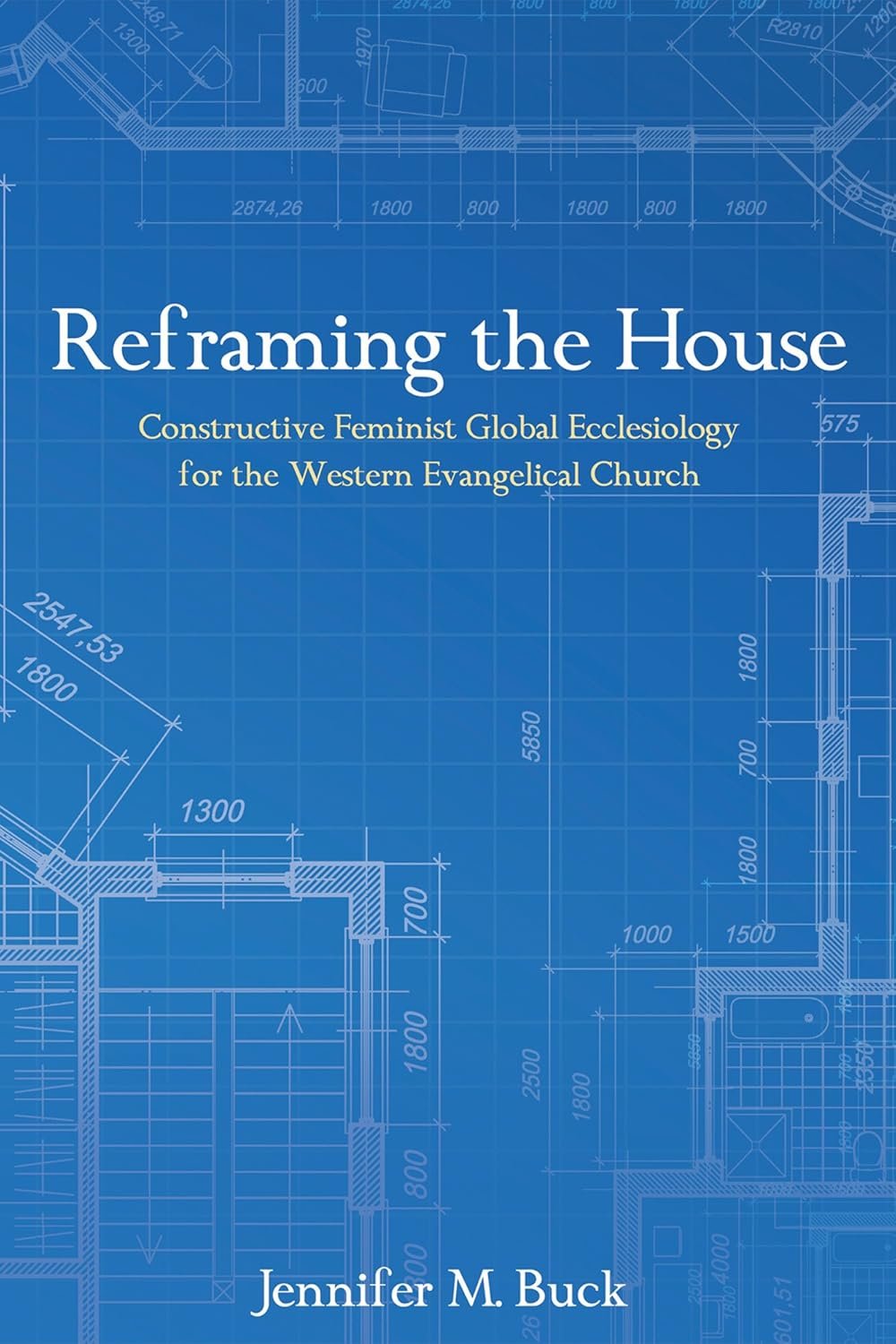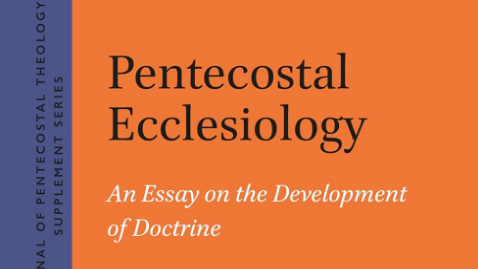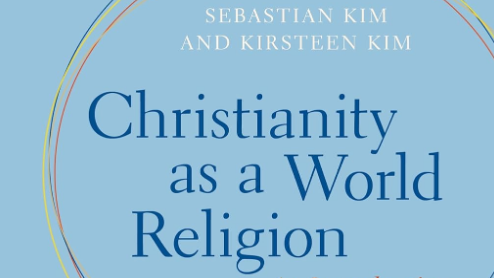Reframing the House: Constructive Feminist Global Ecclesiology for the Western Evangelical Church

Table of contents
Listen to the blog

Jennifer Buck’s book, Reframing the House: Constructive Feminist Global Ecclesiology for the Western Evangelical Church, offers a critical examination of what she identifies as incomplete and one-dimensional ecclesiological frameworks presented by Western theologians to Western audiences. Drawing on the perspectives of three feminist theologians from the Global South, Buck critiques the systemic and systematic neglect by the Western church of the broader global realities in its limited ecclesiological formulations.
The Review
The three theologians whose voices Buck amplifies are Maria Pilar Aquino, Kwok Pui-Lan, and Mercy Amba Oduyoye. Maria Pilar Aquino, a Mexican-American scholar, focuses on Catholic Hispanic theology and the experiences of Latin American women, positioning her as a leading figure in the Latina feminist theological movement. Kwok Pui-Lan, representing the Asian perspective, is an esteemed scholar in Asian feminist and postcolonial theology. Mercy Amba Oduyoye, a pioneering figure in African women’s theology and ecumenical work, represents the African voice.
Buck argues that the attributes of these third-world feminist perspectives extend beyond their localized contexts and apply broadly to the entire theological enterprise of ecclesiology across geopolitical spaces. She contends that the Western church is ensnared by cultural barriers and structures of sin that constrain the scope and consistency of Christianity. Her critique addresses issues such as individualism, racism, sexism, hegemonic nationalistic agendas, violence, and the marginalization of the weakest members of society. She also explores related topics such as salvation, sin, peacemaking, women in ministry, and multi-ethnic churches, ultimately seeking to challenge the perceived effectiveness of Western Christianity in a globalized, impoverished context.
Methodologically, Buck’s work expands on the framework of liberation theology, challenging the West and portraying Western theology as increasingly oppressive and silencing. She asserts that the focus of liberation theology has shifted from broader governmental revolutions to particularized struggles for justice, a shift that underpins her methodological approach of incorporating distinct voices from the Global South into the discourse on Western ecclesiology. Buck addresses politically-minded theologians within the church, urging them to engage in a more robust ecclesiology that aligns with the gospel’s call to advocate for the oppressed and marginalized.
Structurally, the book invites a conversation between globalized Christianity and the contemporary Western church. Buck begins by examining distinct ecclesiologies, including the Quaker tradition and feminist ecclesiologies, and briefly considers the influence of Trinitarian theology. She then amplifies the voices of the three third-world feminist theologians—Mercy Amba Oduyoye, Kwok Pui-Lan, and Maria Pilar Aquino—before presenting her conclusions as a constructive global ecclesiology. Buck pays particular attention to the salvation of whole persons and the structures of sin, offering theological treatments that emphasize the importance of peacemaking, women in leadership, and multi-ethnic churches as foundational ecclesiological tenets.
Buck’s book is an essential resource for scholars and academically-oriented individuals within the church, providing readers with the tools to critically examine their theology and ecclesiology. It serves as a valuable roadmap for Evangelicals (and others) seeking new ecclesial perspectives to navigate the complexities of a globalizing world. Buck presents innovative frameworks for addressing contemporary questions in the church, asserting that feminist theology is a necessary corrective to the patriarchal, heterosexual, and Western-Eurocentric biases that have long dominated ecclesiological discourse.
The Critique
While Buck’s book is insightful, several critiques can be offered to enhance its impact.
First, the voices of the three women theologians presented in the book, while crucial, should not be considered exhaustive representations of global feminist theology. Although Buck makes a commendable effort to connect their localized experiences to broader Western society, the fact that these experiences are outside her own raises questions about the book’s authenticity. The work is theoretically derived rather than grounded in first-hand experience, which could limit its applicability.
The assumption of a seamless unity between the experiences and theologies of three third-world women and those of a first-world woman is problematic. Theology is inherently local and contextual, and it is challenging to apply theological insights from African, Latin American, and Asian contexts directly to the First World West and American evangelicalism in particular.
Second, for a book focused on feminist global ecclesiology, Buck’s reliance on male theologians to articulate feminist ecclesiology is noteworthy. In Chapter 1, “The Significance of Christian Ecclesiology,” Buck draws heavily on the work of Karl Barth, Joerg Rieger, David Fitch, Justo González, Michael Hardt, Antonio Negri, Walter Wink, Alister McGrath, Anselm Min, and Philip Jenkins, among others. While these male theologians are undoubtedly important, a book dedicated to constructing a feminist ecclesiology should have prioritized female voices. This reliance on male theologians continues in Chapter 2, which addresses “Methodology.” Buck discusses the methodologies of Moltmann, Howard Yoder, and Gutierrez before engaging with feminist theologians. The section on methodology would have been more effective had it focused exclusively on the contributions of feminist theologians, particularly regarding how feminist theology can offer new approaches to ecclesiology.
The book’s most compelling and enriching section is “Third World Feminist Ecclesiology.” This part of the text should have been expanded, as it offers profound insights into what the church could become in the future. The scholars Buck highlights in this chapter, such as Oduyoye, provide visionary perspectives on the integration of local religious beliefs within African Christianity, emphasizing the shared belief in the divine origin of the universe and humanity’s role as its steward. Oduyoye’s discussion of the liberating power of African women, drawing on John 4:42, underscores the importance of Christ’s alignment with the powerless and his role in dismantling social injustices. The move away from colonial models of Christ as an imperial, conquering warrior toward a more benevolent savior is a significant theological shift that requires careful consideration of local contexts before broader application. Buck could have further explored these themes methodologically, and including more voices from genuinely marginalized women who have faced and overcome suppression would have enriched the discussion.
Buck concludes the book with a focus on multi-ethnic churches, an appropriate and forward-looking way to end the text. However, more attention should have been given to how American churches can practically evolve into multi-ethnic or intercultural communities, as Buck’s primary audience is American. Offering practical steps or guidelines for readers to apply the insights of the three theologians to the context of intercultural churches would have significantly strengthened the book’s impact.
Conclusion
Overall, I found Reframing the House to be an intellectually stimulating and informative read. It introduced me to new concepts and ideas that will remain with me for years to come. Buck’s commitment to gender equality and ecumenism is evident, and her incorporation of global feminist theologians underscores the necessity of engaging with diverse voices to sustain the church in a globalizing world.



